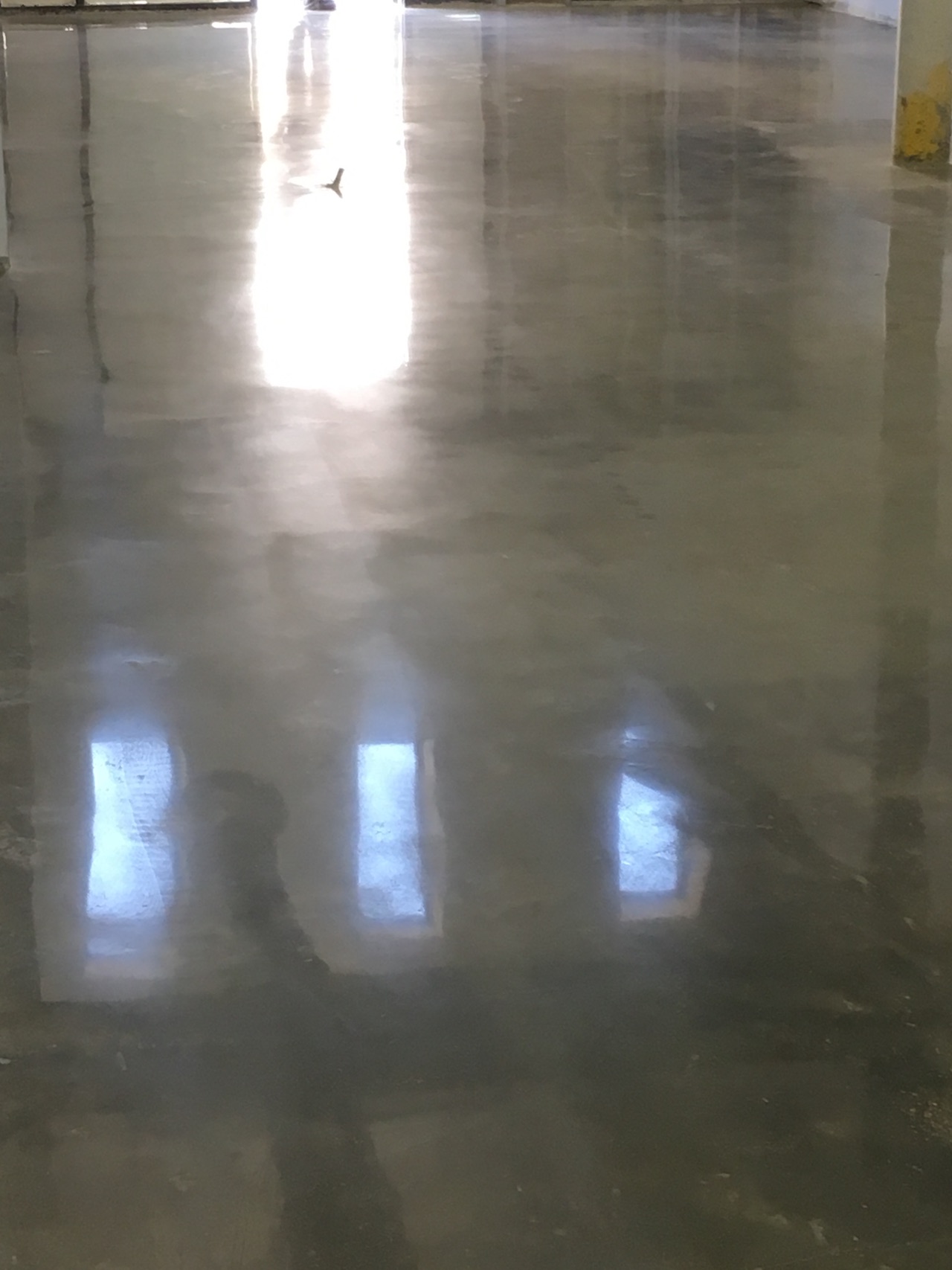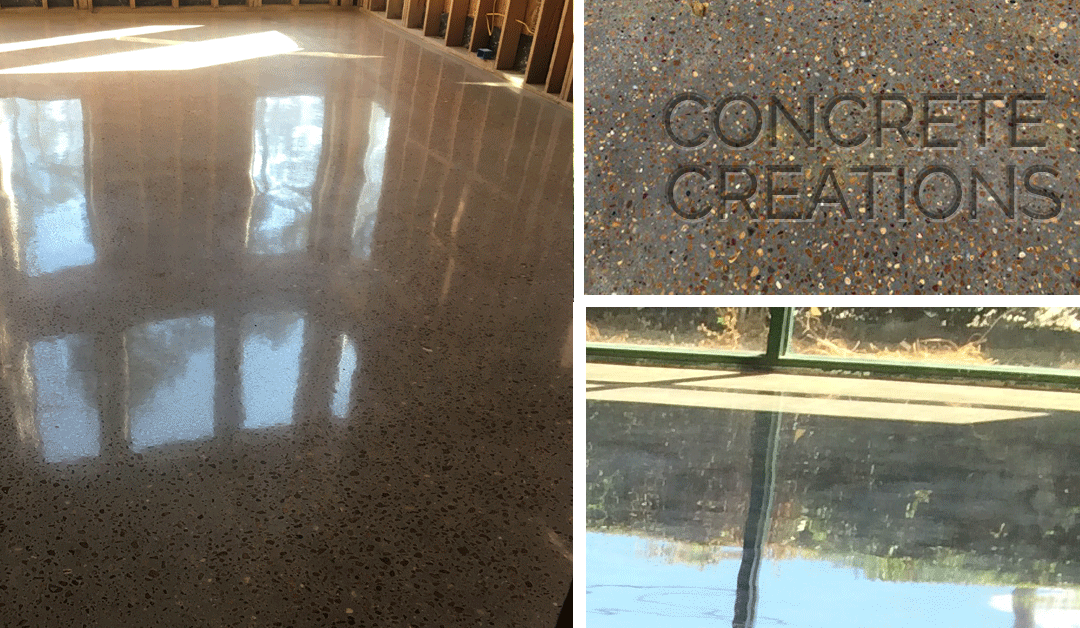Twenty five years ago the latest rage in new homes was natural concrete (some people call it cement) that was scored and stained. Patterns in the scoring could make it really beautiful and it could be stained to most basic colors. Although concrete is still a great option for floors, there’s another way to do it. In this posting I’m going to tell you the difference between polished concrete and stained concrete, and the mistake people are making when talking to builders.
First, let’s look at the story of concrete and why it’s a common material used in homes. According to the “Timeline of Concrete & Cement History”, published by concretenetwork.com, the history of cement and concrete floors and structures span over 5,000 years, from the time of the Egyptian Pyramids to present day decorative concrete floors. It goes something like this:
The History of Concrete
3000 BC – the pyramids were built using the earliest forms of concrete
300 BC – Roman architecture the Colosseum and the Pantheon used animal products in the cement as an early form of admixtures
1824 – Portland Cement was invented
1836 – the first test of tensile and compressive strength took place in Germany
1889 – Alvord Lake Bridge was built in San Francisco – it still stands today
1891 – the first concrete street in America was built in Bellefontaine, Ohio
1903 – The first concrete high rise was built in Cincinnati, Ohio
1908 – The first concrete home was built by Thomas Edison in Union, New Jersey
1913 – The first load of ready mix was delivered in Baltimore, Maryland
1915 – colored concrete was introduced, and has done nothing but grow since
1936 – Hoover Dam was completed
1950s – Decorative concreted was developed
1963 – The first concrete domed sports arena was built at the University of Illinois
1970s – Fiber reinforcement was introduced as a way to strengthen concrete
1980s – Concrete countertops were introduced to new homes
1990 – Concrete scoring, staining, and engraving were introduced
1999 – Polished concrete was introduced in a 40,000 square foot warehouse floor for the Bellagio in Las Vegas
Stained Concrete Flooring
One date that should be on this timeline is 1994. That’s the year that Mack Kimbrough of Concrete Creations LLC started his career in concrete. He was introduced to decorative concrete and most of his work centered around decorative overlays on pool decks, patios, and driveways. “People kept asking for stained concrete, and I realized one day that I really need to learn how to do this since it was apparent that it was going to be a choice for new homes going forward,” says Mack.
Back then the best place to introduce a business like Mack’s was through

homebuilder shows and expositions. Today’s baby boomers were starting to build their first homes and they were looking for new and unique ideas. In that day, interest rates had finally begin to come down and the pent up demand for homes was off the charts. “There were so many people in our booth at the home show that we couldn’t even talk to them all. I would write down as many names and numbers as I could on a notepad, but I couldn’t even keep up with all of the people asking for stained floors back then. The business of stained concrete was big and my business really took off then,” continues Mack. This continued for about ten years and between the shows and referrals, there was enough work for everyone in the business.
Polished Concrete Flooring
In 2008, life changed for many people, primarily for small businesses like Mack’s. The economic recession set in and it brought new construction, primarily new homes, to a halt. Not only was the American dream at stake, but so were many businesses.
During this time, HGTV and social media and the concept of do-it-yourself infiltrated the lives of most consumers. Businesses like Mack’s suffered because of the competition of newcomers to the market who were one-man shops. All of a sudden they started getting what was left of new business because they had less overhead and were cheaper. Today’s millennials were now entering the workforce with a new independent mentality and work style. They were learning things in college that would have an effect on bidding for jobs. Many times, the result was a lower quality floor and it was a poor reflection on concrete floors as a “beautiful flooring” option.
To stay in business, Mack knew that he had to differentiate himself and one way of doing that was to do something that leveraged his many years of experience and credibility. Instead of stained concrete floors, he changed his lead business offering to polished concrete floors. He had the equipment and the education to pivot his business and to make an offering that was unique.
Granite and Marble Surfaces
In the last ten years there has been a sharp rise in the demand for granite and marble surfaces in new homes. The natural look and shine of granite and marble is what people are expecting when they ask for concrete floors. “I get calls from people who ask for stained concrete, but what they really want is polished concrete. They want their flooring to have the same high quality and expensive look as their countertops.”
This is where polished concrete is superior to stained concrete. Stained concrete has a coating on it to make a shine that is very durable. Polished concrete is just that – it’s polished rock and the actual surface is smooth. It’s a process that is designed to look good and last for years like granite and marble.
Polished Concrete vs. Stained Concrete
Mack Kimbrough and many other contractors believe that concrete flooring is the best option for floors. It’s easy to clean, looks good for a long time, it’s economical to install, and it absorbs air conditioning in the summer months and heat in the winter months to keep homes comfortable. Polished concrete, however, offers the advantage of a reflective shine that will look good for years and is more comparable to marble and granite that home builders are now using for many surfaces throughout new homes. Like marble and granite the polishing process gives your concrete that smooth rich high-gloss finish without the ongoing maintenance of a topical coating. That’s the mistake that people make when they talk to builders: they ask for concrete with the expectation that it look like granite or marble, but they don’t understand the difference between stained concrete floors and polished concrete floors.
If you’re building a home, be specific – ask for polished concrete floors instead of stained concrete floors. You’ll never regret your decision for concrete and you’ll enjoy many years of the beauty and durability of polished concrete.
To learn more about polished concrete visit the Concrete Creations LLC website at ScoreAndStain.com.
Front Door Content writes articles for products that they believe are game-changers. Contact us to review your product.


Recent Comments